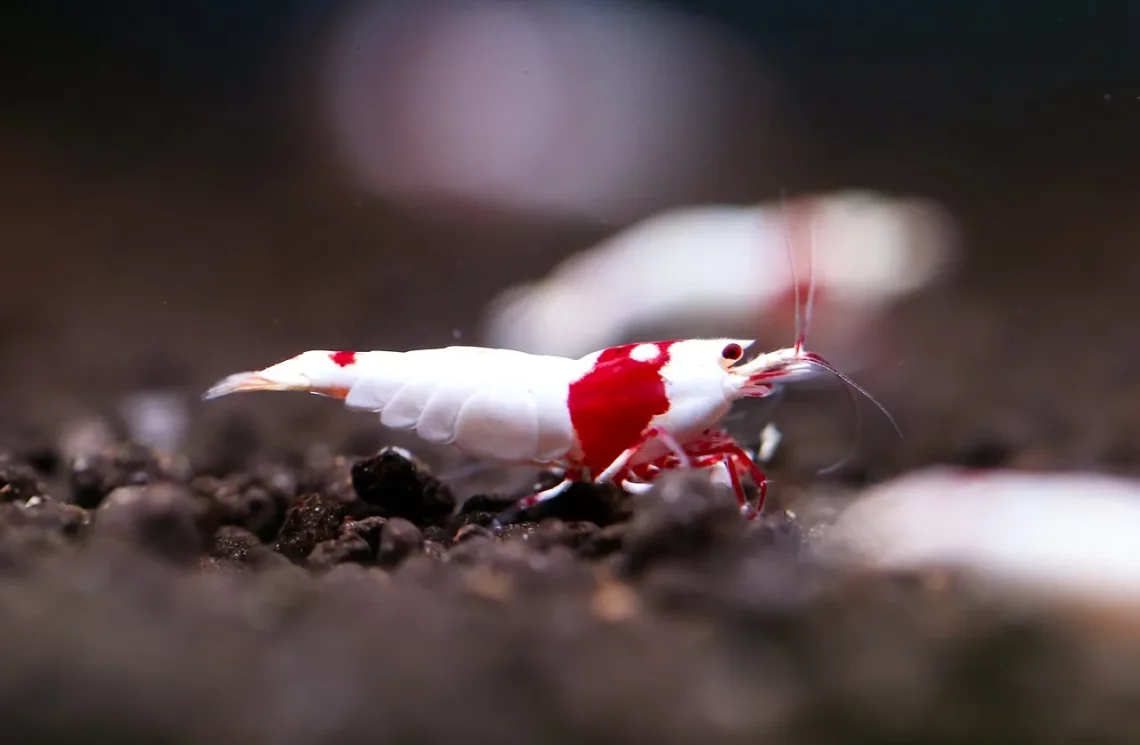
Understanding Cherry Shrimp Eggs: Care, Hatching, and Growth Tips
Cherry shrimp are not just popular for their vibrant colors and engaging behaviors; they also have a fascinating reproductive cycle that can be a rewarding experience for aquarists. As these small crustaceans mature, they exhibit beautiful breeding behaviors, leading to the production of eggs that are a critical part of their life cycle. Understanding the nuances of cherry shrimp eggs, from their care to the hatching process, is essential for anyone looking to successfully breed these aquatic creatures.
Cherry shrimp eggs are a testament to the resilience and adaptability of these tiny beings. They are laid by female shrimp and can vary in color, ranging from transparent to deep blue or even red, depending on the genetic makeup of the shrimp and their environmental conditions. The presence of eggs is often a source of excitement for shrimp keepers, as it signifies not only the health of the shrimp but also the potential for new additions to the aquarium.
However, breeding cherry shrimp is not without its challenges. From ensuring optimal water conditions to providing proper nutrition for both the adult shrimp and the hatchlings, there is much to consider. In this article, we will delve deeper into the various aspects of cherry shrimp eggs, focusing on their care, the hatching process, and essential growth tips that will help aquarists foster a thriving environment for these delightful creatures.
Care for Cherry Shrimp Eggs
Caring for cherry shrimp eggs requires a keen understanding of the conditions that support their development. When a female cherry shrimp is ready to lay eggs, she typically carries them under her abdomen, where they are fertilized. This stage is crucial as the environment can significantly impact the health of the eggs.
First and foremost, water quality plays a vital role in the development of cherry shrimp eggs. The water should be kept clean, with a stable temperature ranging between 72°F to 78°F. Ammonia and nitrite levels should be monitored closely, as any spikes can harm the delicate eggs. Regular water changes of about 10-20% weekly can help maintain optimal conditions. Additionally, ensuring that the pH levels are between 6.5 and 8.0 is essential for the overall health of the shrimp and their eggs.
Another critical factor is the presence of suitable tank mates. While cherry shrimp can coexist with various fish, it is important to avoid aggressive species that may stress the shrimp or prey on the eggs. Gentle tankmates such as small tetras or snails can create a harmonious environment.
Lighting is also a consideration during this period. Providing a consistent light cycle can help mimic the natural environment for cherry shrimp. Generally, around 10-12 hours of light per day is ideal. This not only supports the shrimp’s biological clock but also encourages the growth of algae and biofilm, which serve as food sources for both adult shrimp and their young.
Finally, it is beneficial to add plants or moss in the tank. These not only serve as hiding spots for the shrimp but can also provide a surface for the eggs to attach securely. Java moss and other aquatic plants can create a more natural habitat, which is conducive to breeding.
The Hatching Process of Cherry Shrimp Eggs
Once the eggs are laid and cared for, the hatching process begins, typically taking around 2-4 weeks, depending on the water temperature and overall health of the eggs. During this time, the female will continue to carry the eggs under her abdomen, providing them with the necessary protection and oxygenation.
As the eggs develop, they will change color, often becoming darker as they approach the hatching stage. This change is a sign that the embryos are maturing and ready to emerge. It is essential during this time to maintain stable water conditions to ensure the highest hatch rate. Fluctuations in temperature or water quality can lead to unsuccessful hatching or weaker shrimp.
When the eggs hatch, tiny shrimp, known as larvae or “shrimplets,” will emerge. These newly hatched shrimp are incredibly small, often measuring just a few millimeters in size. At this stage, they are fully capable of swimming and will begin to explore their surroundings almost immediately.
One of the most critical aspects of this phase is the availability of food. Newly hatched cherry shrimp are often too small to consume standard fish food, so providing appropriate nutrition is paramount. Fine powdered food or specially formulated baby shrimp food can be introduced into the tank to ensure that the young shrimp receive adequate nutrition.
Additionally, it is essential to maintain a low-stress environment during this period. The shrimplets are vulnerable, and ensuring they have plenty of hiding spots will help them feel secure as they acclimate to their new world.
As the shrimplets grow, they will undergo several molts, shedding their exoskeletons as they increase in size. This process is a normal part of their growth but can be stressful, so maintaining optimal water conditions and minimizing disturbances is crucial during these times.
Essential Growth Tips for Cherry Shrimp
Once the cherry shrimp have hatched and are settling into their new environment, there are several growth tips to ensure they thrive. The first step is to monitor their growth closely. Observing their size and behavior can provide valuable insights into their health and development.
Maintaining water quality remains essential even after hatching. Regular testing for ammonia, nitrites, and nitrates should continue, as young shrimp are particularly sensitive to changes in water quality. Keeping the tank clean and performing consistent water changes will support their growth and overall well-being.
Feeding is another critical aspect of nurturing cherry shrimp. As they grow, it’s important to offer a varied diet that includes high-quality shrimp pellets, blanched vegetables like zucchini or spinach, and even special algae wafers. This varied diet will ensure they receive the necessary nutrients to grow strong and healthy.
Additionally, as they grow and molt, providing calcium is essential. Calcium is crucial for developing their exoskeletons, and it can be supplemented through crushed coral or calcium-rich foods.
Creating a suitable environment is also vital. As cherry shrimp grow, they may require more space to thrive. If a tank becomes overcrowded, it can lead to stress and competition for resources. Consider transferring some shrimp to another tank or increasing the size of the current habitat.
Lastly, patience is key. Cherry shrimp may take some time to reach maturity, but with proper care, they can become vibrant and beautiful additions to any aquarium. Monitoring their progress and making adjustments as necessary will help ensure a successful breeding experience.
In conclusion, understanding cherry shrimp eggs, their care, and the growth of the hatchlings is crucial for anyone looking to breed these colorful aquatic pets. By maintaining optimal conditions and providing the right nutrition, aquarists can enjoy the rewarding experience of watching these charming creatures thrive in their tanks.




